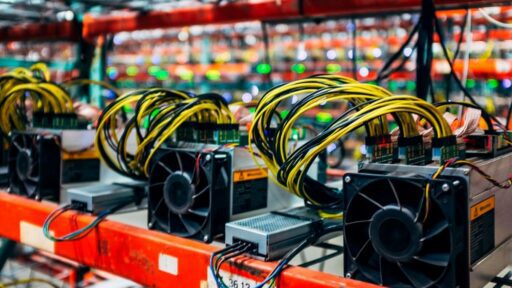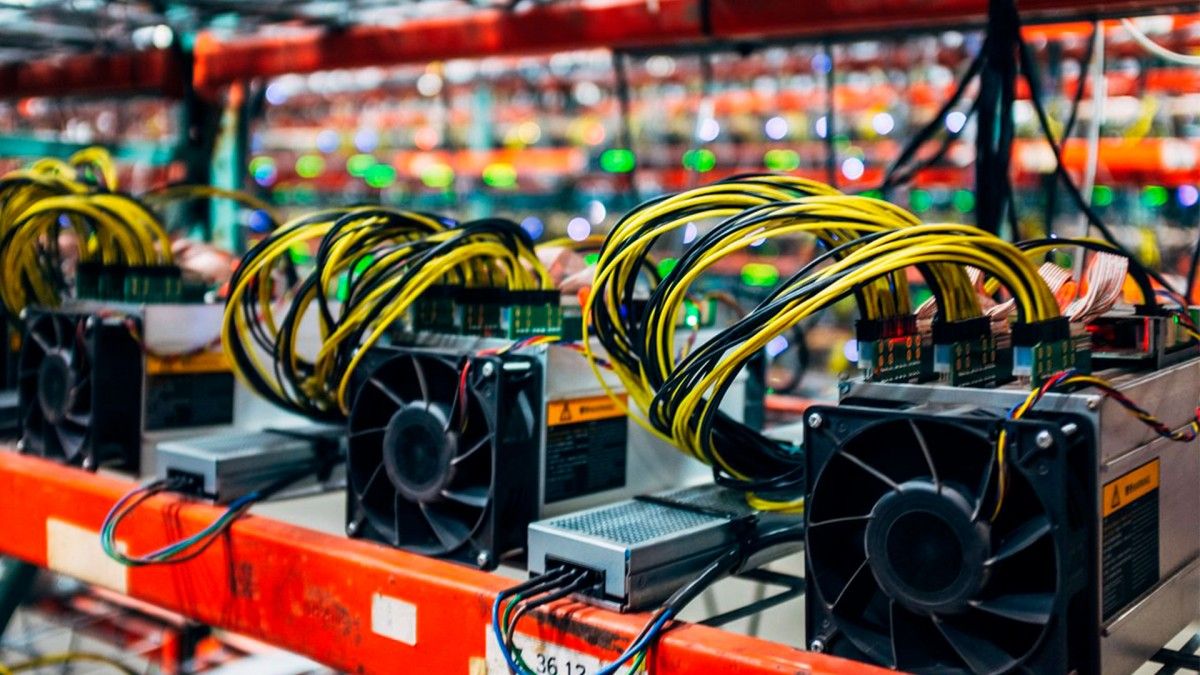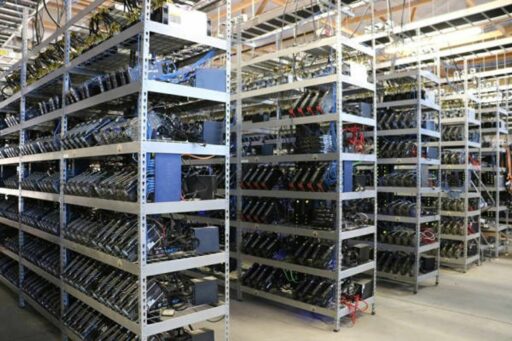The world of crypto mining farms is a complex ecosystem where savvy individuals and companies harness the power of high-performance computers to extract digital currencies from the blockchain. This article delves into the intricate workings of crypto mining farms, exploring how they maximize profits through strategic operations, efficient hardware, and market timing. It also touches on the financial and community aspects that play a pivotal role in the success of these digital currency harvesting operations.
Key Takeaways
- Crypto mining farms require sophisticated infrastructure and optimization of hardware to ensure maximum efficiency and profitability.
- Renewable energy sources are increasingly important in mining operations to reduce costs and align with environmental sustainability.
- Profit maximization strategies include selecting the right cryptocurrency, timing the market, and diversifying mining activities.
- Financial management of mining operations involves careful investment calculations, tax minimization, and strategic reinvestment to scale up.
- The crypto mining community is essential for decentralized finance, and staying abreast of emerging technologies and regulatory changes is crucial.
Exploring the Mechanics of Crypto Mining Farms

Understanding the Infrastructure
At the heart of any crypto mining farm lies a complex infrastructure designed to optimize the mining process. This infrastructure includes an array of high-performance computers, known as mining rigs, which are tasked with solving cryptographic puzzles to validate transactions and secure the blockchain network.
- Cooling systems are crucial to prevent overheating and ensure the longevity of the hardware.
- Electrical systems must be robust to handle the high power demands of continuous mining operations.
- Networking equipment is essential for maintaining a stable connection to the blockchain network.
- Monitoring software tracks the performance and health of the mining rigs, enabling timely maintenance and upgrades.
Maximizing crypto mining profitability not only involves selecting the right hardware but also entails a deep understanding of market trends and efficiency strategies. Sunminer’s role in shaping the future of mining emphasizes the importance of a thorough cost-benefit analysis.
The infrastructure’s design is a balancing act between cost, performance, and reliability, with the ultimate goal of achieving the highest possible return on investment.
The Role of Renewable Energy
The integration of renewable energy sources is pivotal in the sustainability and cost-effectiveness of crypto mining farms. By harnessing solar, wind, or hydroelectric power, these operations can significantly reduce their carbon footprint and electricity costs, which are among the largest expenses in mining.
- Solar power: Ideal for areas with high sun exposure, reducing reliance on the grid.
- Wind energy: Effective in regions with consistent wind patterns.
- Hydroelectric power: Offers a stable and continuous energy supply, especially beneficial for 24/7 mining operations.
Embracing renewable energy not only aligns with global environmental goals but also provides a competitive edge in the market by lowering operational costs.
The transition to green energy is not without challenges, such as the initial investment in infrastructure and the need for geographical suitability. However, the long-term benefits often outweigh these hurdles, making it a strategic move for forward-thinking mining farms.
Optimizing Hardware for Maximum Efficiency
In the competitive realm of crypto mining farms, optimizing hardware is crucial for maximizing efficiency and profitability. Technological advancements in mining focus on efficient hardware for profitability and energy reduction. Miners are constantly on the lookout for the latest innovations that offer increased hash rates and lower power consumption.
- Overclocking: Pushing GPUs beyond their factory settings can yield better performance.
- ASICs: Application-Specific Integrated Circuits are designed for optimal mining efficiency.
- Cooling Systems: Effective cooling solutions prevent overheating and maintain hardware longevity.
Shift towards eco-friendly solutions and alternative consensus mechanisms like PoS aim to address environmental concerns. The balance between power and performance is a delicate one, and miners must navigate this to stay ahead. By refining hardware configurations and staying abreast of new technologies, mining operations can significantly reduce operational costs and enhance their competitive edge.
Strategies for Maximizing Profits in Digital Currency Harvesting

Choosing the Right Cryptocurrency to Mine
Selecting the most profitable cryptocurrency to mine is a critical decision for any mining operation. The choice can significantly impact the potential earnings and sustainability of the mining farm. Factors such as coin value, mining difficulty, and network hash rate must be considered.
- Coin Value: The current and potential future value of a cryptocurrency is a primary consideration. A higher value can mean more profit when mined coins are sold.
- Mining Difficulty: This metric indicates how hard it is to find a new block. As difficulty increases, more computational power is required, reducing profitability.
- Network Hash Rate: The total mining power on a network affects your chances of successfully mining a block. A higher hash rate means more competition.
By focusing on these factors, miners can strategically choose which cryptocurrencies to target, aiming to maximize their return on investment while navigating the complexities of the crypto market.
Timing the Market: When to Mine and When to Sell
In the volatile world of cryptocurrency, timing is everything. Effective participation in the crypto economy requires an understanding of both short-term fluctuations and long-term trends. Astute miners track prices and make decisions based on anticipated market movements, thus ensuring their financial growth within the digital currency landscape.
Unlocking wealth through profitable crypto mining in 2024 requires assessing market trends, optimizing operations, selecting coins wisely, understanding financial implications, and complying with regulations.
Here are some key considerations for timing the market:
- Monitor Time-Sensitive Events: Stay informed about temporary boosts or events that can increase profitability for certain cryptocurrencies.
- Balance Mining Methods: While some coins may offer higher returns, diversifying your mining portfolio can provide stability.
- Understand the OSRS Economy: Recognize how current market prices and the availability of coins affect your earnings.
Remember, market prices fluctuate, so profits are subject to change. By engaging in these strategies, miners enjoy a steady increase in their wealth, allowing them to reinvest in their operations and scale up effectively.
Diversifying Mining Activities to Reduce Risk
In the volatile world of cryptocurrency, diversifying mining activities is a crucial strategy for mitigating risk. By spreading investments across different cryptocurrencies and mining methods, miners can protect themselves against market fluctuations and the potential decline in value of any single digital asset.
Diversification is not just about choosing different currencies; it’s also about adapting to various mining protocols and staying flexible with the changing landscape of digital currencies.
For instance, a miner might allocate their resources as follows:
- 40% in Bitcoin mining
- 30% in Ethereum mining
- 15% in altcoins with high growth potential
- 15% in experimental mining pools or new blockchain technologies
This approach not only spreads the risk but also opens up opportunities for unexpected gains from emerging coins. It’s important to remember that understanding risks and maintaining a balanced portfolio are key to long-term success in crypto mining.
The Financial Aspects of Running a Mining Operation

Calculating the Costs: Investment vs. Return
In the realm of crypto mining, calculating the costs and potential returns is a critical step for any miner or mining operation. The basic formula for determining profitability is straightforward: [proceeds - cost basis](https://tokentax.co/blog/how-to-calculate-your-crypto-taxes) = capital gain or loss. This calculation helps miners understand the financial viability of their operations.
To maximize returns, miners must meticulously track their investments and operational expenses. This includes the initial setup costs, ongoing electricity bills, hardware maintenance, and any other overheads. By doing so, miners can make informed decisions about scaling up or optimizing their current setups.
Here’s a simplified breakdown of the typical costs associated with a mining operation:
- Initial Investment: Purchasing mining rigs, setting up infrastructure.
- Operational Costs: Electricity, internet, cooling systems.
- Maintenance: Hardware repairs, software updates.
- Miscellaneous: Rent (if applicable), employee salaries.
Understanding these expenses is essential for projecting long-term profitability and ensuring that the mining farm remains a sustainable venture.
Minimizing Taxes on DeFi Transactions
In the dynamic world of decentralized finance (DeFi), minimizing tax liabilities is as crucial as maximizing profits. DeFi transactions can trigger various tax events, and understanding these can lead to significant savings. Here are common DeFi activities and their potential tax implications:
- Token Swaps
- Staking
- Lending and Borrowing
- Yield Farming
- Liquidity Pools
- Non-Fungible Tokens (NFTs)
- Governance Tokens
- Decentralized Autonomous Organizations (DAOs)
Working with a tax advisor can help navigate the complexities of DeFi taxes. Strategies like tax-loss harvesting, leveraging long-term capital gains, and using tax-advantaged accounts can be effective. It’s important to stay informed about tax code changes, such as the potential introduction of Form 1099-DA, which could impact DeFi reporting in the future.
By proactively managing your DeFi transactions and staying abreast of evolving IRS guidance, you can reduce your tax burden and keep more of your hard-earned crypto gains.
International considerations are also vital. U.S. taxpayers engaging with overseas DeFi platforms may face additional reporting requirements under FATCA and FBAR. The classification of a DeFi protocol as a non-US business entity could lead to higher taxation on income as ordinary income.
Reinvesting Earnings to Scale Up Operations
Reinvesting earnings back into a mining operation is a strategic move that can lead to significant scaling and increased profits over time. By allocating a portion of profits to upgrade hardware and expand infrastructure, miners can enhance their computational power and efficiency. This reinvestment not only bolsters the operation’s capacity to generate more cryptocurrency but also prepares the business for future advancements in mining technology.
- Electricity costs and hardware efficiency are critical factors that determine the profitability of a mining operation. Miners must continuously assess these elements to ensure they are not eroding their margins.
- The market value of cryptocurrency and mining difficulty also play pivotal roles in influencing outcomes. It’s essential to keep a pulse on these variables to make informed decisions about reinvestment.
Calculators are available that estimate mining profits based on current conditions, helping miners to strategize their reinvestment plans effectively.
While reinvestment can accelerate growth, it’s important to balance this with the need for liquidity and risk management. A well-considered reinvestment strategy can be the difference between a thriving operation and one that struggles to adapt to the ever-changing landscape of digital currency mining.
Passive Income and AFK Profit Generation in Crypto Mining

Automating Mining Processes
In the realm of crypto mining, automation is the linchpin of efficiency. By automating repetitive tasks, miners can focus on strategic decisions while the system handles the day-to-day operations. This not only saves time but also ensures that the mining process is uninterrupted, leading to more consistent earnings.
Automation tools range from simple software scripts that restart mining rigs after power outages to sophisticated systems that adjust mining parameters in real-time based on market conditions.
To effectively automate a mining operation, consider the following steps:
- Implement mining software that supports automation.
- Set up remote monitoring and management for your rigs.
- Utilize smart scripts to optimize mining for profitability.
- Integrate price tracking and auto-switching algorithms to mine the most profitable coins.
By embracing automation, miners can create a more resilient and profitable operation, capable of adapting to the ever-changing landscape of the crypto market.
Profitable AFK Activities for Supplemental Income
In the world of crypto mining, passive income strategies are essential for maximizing profits while AFK (away from keyboard). Similar to gaming scenarios, such as those in Old School RuneScape (OSRS), where players engage in activities like fishing or woodcutting to earn money passively, crypto miners can also set up systems that generate income with minimal active management.
- Automated Staking: By staking their digital assets, miners can earn rewards over time without the need for constant supervision.
- Lending Platforms: Utilizing DeFi lending platforms allows miners to lend out their cryptocurrency and earn interest as a passive income stream.
- Masternodes: Running a masternode for certain cryptocurrencies provides a source of income in exchange for supporting the network’s infrastructure.
While these methods may not require active engagement, it’s crucial to monitor these activities periodically to ensure they remain profitable and secure.
Diversifying into these passive income avenues can supplement the earnings from traditional mining operations, providing a more stable financial base and mitigating the risks associated with the volatility of the crypto market.
Scheduling for Efficiency: Aligning Mining with Market Dynamics
Efficient crypto mining is not just about having the best hardware; it’s also about aligning mining operations with market dynamics. Astute miners track price fluctuations and schedule their mining activities to capitalize on peak market conditions. This strategic timing can significantly enhance profitability.
Effective scheduling involves understanding both short-term market fluctuations and long-term trends. By anticipating market movements, miners can optimize the times at which they mine and sell their digital currencies.
Here are some key considerations for efficient scheduling:
- Time-Sensitive Events: Stay informed about market events that can affect profitability and prioritize mining during these periods.
- Balance Methods: Diversify mining activities to ensure a steady income stream, even when certain currencies are less profitable.
- Prioritize Profitable Activities: Focus on mining cryptocurrencies that offer higher returns, adjusting as market conditions change.
By implementing these strategies, miners can create a more resilient and efficient operation that is better equipped to navigate the volatile nature of cryptocurrency markets.
Community and Future Trends in Crypto Mining

The Importance of Community in Decentralized Finance
In the dynamic world of Decentralized Finance (DeFi), the community is not just an audience, but a driving force. These communities play a crucial role in the growth and adoption of digital assets, offering a space for collaboration and innovation in the decentralized landscape. They are the backbone of any successful crypto project, influencing development, governance, and even market trends.
- Governance Tokens: Community members often hold tokens that allow them to vote on key decisions, steering the project’s direction.
- NFT-Based Memberships: Tokens like Bored Ape Yacht Club grant exclusive access and rights, fostering a sense of belonging and investment in the project’s success.
- Education and Support: Newcomers rely on the community for guidance and resources, such as EtherFi’s farming guide, to navigate the complexities of DeFi.
The synergy between a project’s success and its community’s engagement is undeniable. A vibrant community not only supports a project but also propels it forward through active participation and advocacy.
As DeFi continues to evolve, understanding the nuances of community interaction and contribution becomes essential. Whether it’s through governance, exclusive memberships, or educational support, the community’s role is integral to the sustainability and innovation of DeFi projects.
Emerging Technologies and Their Impact on Mining
The advent of emerging technologies has significantly altered the landscape of crypto mining, introducing new methods to enhance efficiency and profitability. Artificial Intelligence (AI) and Machine Learning (ML) are at the forefront, optimizing mining operations by predicting market trends and automating decision-making processes.
- AI and ML: Predictive analytics for market trends
- Quantum Computing: Potential to solve complex cryptographic puzzles
- Blockchain Innovations: Improved security and transaction speed
The integration of these technologies not only streamlines operations but also opens up possibilities for miners to stay ahead in a highly competitive market.
Furthermore, the development of quantum computing holds the promise of solving cryptographic puzzles at unprecedented speeds, potentially reshaping the entire mining strategy. Blockchain innovations continue to enhance security and transaction speeds, further bolstering the robustness of mining infrastructures.
Adapting to Regulatory Changes in the Crypto Space
As the crypto landscape evolves, so too does the regulatory environment. Adapting to these changes is crucial for the sustainability and legality of mining operations. Miners must stay informed about new regulations and adjust their practices accordingly to avoid penalties and maximize profits.
- Stay updated with IRS guidelines and tax code changes.
- Consult with tax advisors to leverage tax-loss harvesting and optimize tax liabilities.
- Be prepared for new reporting requirements, such as the potential introduction of Form 1099-DA.
Regulatory agility is not just about compliance; it’s a strategic advantage in the fast-paced world of crypto mining.
Understanding the implications of tax laws, such as those pertaining to DeFi transactions, can have a significant impact on the bottom line. For instance, the use of tax-advantaged accounts like IRAs or 401(k)s can defer or minimize taxes on gains, which is an important consideration for miners looking to reinvest in their operations. The table below summarizes key tax considerations for DeFi participants in 2024:
| DeFi Activity | Tax Implication |
|---|---|
| Token Swapping | Capital Gains Tax |
| Buying Goods/Services | Ordinary Income Tax |
| Liquidity Pool Withdrawal | Capital Gains Tax |
| Crypto to Fiat Conversion | Capital Gains Tax |
By proactively adapting to regulatory changes, crypto miners can ensure they remain on the right side of the law while optimizing their financial strategies.
Conclusion
The intricate world of crypto mining farms and digital currency harvesting presents a dynamic landscape for those seeking to maximize their profits. As we’ve explored, the key to success lies in a deep understanding of the market, strategic participation in farming activities, and efficient reward management. While the potential for profit is significant, it’s crucial to stay informed and adapt to the ever-evolving DeFi space. Remember, the profitability of such ventures can fluctuate, and a mindful approach to tax implications and market trends is essential. By prioritizing profitable skills and engaging in time-efficient tasks, players can optimize their earnings and contribute to the growth of decentralized finance. As the industry continues to mature, those who navigate these digital waters with foresight and agility will likely reap the rewards of their digital harvest.
Frequently Asked Questions
What infrastructure is essential for establishing a crypto mining farm?
A crypto mining farm requires robust infrastructure, including high-performance mining hardware, reliable power supplies, cooling systems, high-speed internet connectivity, and secure facilities to house the equipment.
How does renewable energy impact crypto mining profitability?
Using renewable energy can significantly reduce operational costs for crypto mining farms, leading to higher profitability. It also makes the operation more sustainable and environmentally friendly.
What are the most profitable cryptocurrencies to mine?
The profitability of mining a cryptocurrency can vary based on factors such as its market value, mining difficulty, and electricity costs. Popular choices include Bitcoin, Ethereum, and Litecoin, but miners should conduct thorough research to find the most profitable options at any given time.
How can I minimize taxes on my DeFi transactions?
To minimize taxes on DeFi transactions, consider utilizing tax-advantaged accounts, staying informed about tax regulations, and employing strategies like harvesting tax losses to offset gains.
What are some effective AFK profit-generating activities in crypto mining?
Effective AFK profit-generating activities include staking, yield farming, and participating in liquidity pools. These activities can provide passive income while requiring minimal active management.
What emerging technologies could influence the future of crypto mining?
Emerging technologies like improved ASIC miners, quantum computing, and blockchain innovations could greatly influence the efficiency, profitability, and sustainability of crypto mining in the future.





